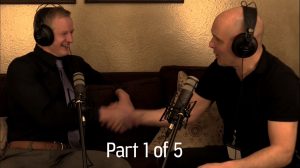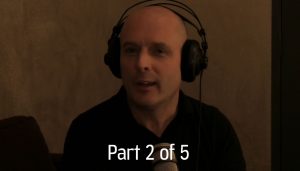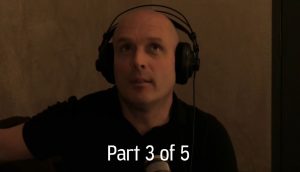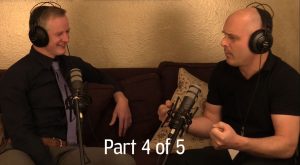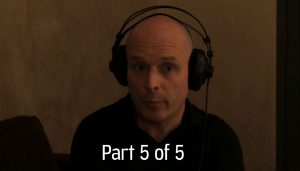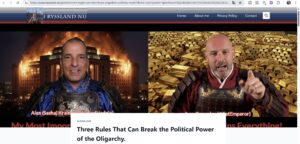Met up with Joan Ifland after her excellent and inspiring talk at Low Carb Seattle; she wrote a landmark book on processed food addiction many years ago, after years of research into the phenomenon. She has now produced the definitive textbook on this problem, for training people in university and classroom settings (btw Dr. Robert Lustig is actually using her new textbook now in university-based courses).
Find Joan at https://www.drjoanifland.com/ and her excellent services at https://www.foodaddictionreset.com/
As always, please help to support this podcast by visiting and importantly #sharing https://ihda.ie/ – to enable the masses to identify their heart disease, and take action to stop it!
TRANSCRIPT:
Ivor Cummins 00:40 I’m here this morning with Joan Ifland, who is an expert on processed food addiction. And in fact, Joan, you’ve just released a book, a textbook called Process Food Addiction which goes through all the details. So, great to meet you. And we can talk about this major problem.
Joan Ifland 00:54 Yes, thank you. Thank you for having me. Yeah, the textbook is a pretty big deal in the world of science and in the world of why people overeat. Because it really lays out that what we have here, it’s not actually an eating problem. Just like cocaine addiction is not actually a snorting problem. It’s an addiction. And so when you have an addiction based on a substance, you directly address these substance use, and then whatever other problems have evolved around this addictive relationship with the substance, then you deal with those. For example, if you had a smoker, yes, maybe the smoker has other issues, but what you would really be focused on is quitting smoking. That’s an addiction. It’s an addiction to nicotine.
Ivor 01:56 And actually, I love that comparison. Because I know during my life and my experience, when I used to smoke, it’s the exact same kind of challenge psychologically and in every other way. The processed food, the sugars, the sugary foods as the smoking and I don’t see any real differences, though some authorities would claim there is a difference, that food is not the same as for instance, smoking or drinking. But I’d agree with you, they are extremely comparable.
Joan 02:24 Well, you’ve just hit on a really key issue, which is, with smoking, you know, it’s smoking. It’s smoking. I have a cigarette in my hand, I’ve lit the cigarette, I’m inhaling smoke, I am smoking. But with processed food addiction, it’s gotten all mixed up with eating. So when you’re smoking, you know you’re smoking. You’re not just breathing, and that happens to have smoke in it. It’s smoking. But with processed foods, people get very, very confused. I’m eating. You know you’re breathing or smoking, it is actually smoking. But when you’re eating processed foods, you don’t think, “Well, I’m in an addiction. I know I’m not eating food.” Like the smoker would say, “I know I’m not breathing air. I’m breathing smoke.” But the eater doesn’t have that clarity. They can’t say, “Well, I know I am. I’m in an addiction. I know I’m eating these processed foods.” Everybody says, “No, no, you’re just eating. You’re just eating.” It’s like saying to a smoker, “You’re just breathing.”
Ivor 03:31 Well, yeah, I guess if everyone smoked, then it wouldn’t be perceived properly as the addiction that it is. So the problem with food is, the processed food is ubiquitous, our society accepts it fully. So if you have a problem with it, it doesn’t feel like you’ve got an addiction. You’re just doing what everyone else is doing. It’s a normality.
Joan 03:51 Right. Great analogy again, when people were smoking, they didn’t know they had an addiction. But then the Surgeon General in the US came out with, “Oh, you know, guys, science says smoking is related to lung cancer.” And then people tried to quit. And they had a really hard time. So the addictive properties of cigarettes didn’t really start to surface until all mass, you know, millions of people could not quit. And then you had the smoking cessation programs. And then you had a lot of discovery as the tobacco industry was taken to court. And they knew. There was in the discovered documents, thousands, hundreds of thousands of pages of documents from the tobacco companies, they knew it was addictive, they were adding sugar to it. And then they were adding things to make it addictive even after they went low tar. So we don’t… we just don’t have that clarity around processed foods.
04:58 I do tell people all the time, “You can divide the world of processed foods into two, just like beverages are divided into alcoholic and non alcoholic. You can divide the food world into addictive processed and non addictive.” And it is the processing that makes the food addictive. Because all food has these great little bits of endorphins. It’s not just, “I’m eating because I need to survive.” They actually bring a nice level of pleasure and you feel good while you’re eating them. That’s a safe level. But when you concentrate those endorphins, those naturally occurring endorphins, that’s when you shift from having food into an addictive substance.
Ivor 05:56 Right. And the cigarette companies for many decades, it was discovered, had designed the products to be more addictive targeted at own all of that terrible stuff. Whereas the food companies, you might think, “Well, let’s just processed food.” It’s made its cheapest possible maximum profit. But the food companies have also designed that food very analogous. In your talk yesterday to the cigarette companies, they’re using the tobacco playbook really.
Joan 06:22 It was tobacco executives that initiated this. So the tobacco industry bought big players in the processed food industry in the 1980s. And in the book, “Salt Sugar Fat” by Michael Moss, he has the scene where the tobacco executives in New York are calling the food executives to come to New York for a meeting about making processed foods addictive.
Ivor 06:55 Right. And that would be around the time, I guess that the tobacco industries were under pressure. They were looking for similar, potentially addictive type products, which could take advantage of the same addictive financial kind of model.
Joan 07:10 Business model, yeah.
Ivor 07:11 Yes. You mentioned that yesterday that there’s a business model built around this whole phenomenon, regardless of the product involved. Maybe talk a little about the business model.
Joan 07:21 Okay. So you might remember, I have an MBA, I took an MBA from Stanford in 1978. So the business side of this has been a big part of my interest over these 23 years that I’ve been looking at food addiction. And it is a model that involves programming neurons to shift into an addictive state. So addictions come from hyperactive craving pathways in the brain. Well, how do you make a hyperactive craving pathway? You have to have repeat exposure. You have to turn those neurons to only release their pleasurable neurotransmitters under the influence of the substance. So the person gradually drifts into this state, where they don’t feel good, unless they’re using the substance. First of all, you have to make the product addictive. So in the case of food, they hired consultants to max out the level of sugar, fat, salt in the products. So 1) you have to make the product addictive, 2) you have to start at the youngest possible age, when neurons are still developing, and then you grab them, and you turn that into a craving neuron. So you started at a young age, it’s addictive properties, young age, and a lot of advertising. So that’s the third A of the five As. And so you’re just getting that repeat conditioning.
09:03 If you see a message 100 times, that message becomes embedded in your brain. So this was a way to get those neurons to constantly think about these addictive foods – sugar, fatty, salty foods. And we saw that once tobacco came in, they ramped up the childhood advertising, the cartoon programs from about 160 sugary, fatty, salty food ads per Saturday morning to 560 within a space of seven years. You see the tobacco industry come in, and then you see those Saturday morning cartoons to shoot up. And then you see Nickelodeon carrying them to 65 million households. So the advertising is a big piece of how it spread so quickly. And you just see those obesity numbers skyrocketing. Very quickly, because the tobacco industry knew how to do it.
Ivor 10:03 Well, they had decades of experience, absolutely. And as their business was threatened, they just switch to a new model. Well, the same model but a new industry. And that was around the 80s and 90s. I think in your talk, you gave the dates, the explosion of obesity paralleled, well proceeded, I guess, by the explosion of what you just described.
Joan 10:24 Yeah, the advertising. And then the other two As are, you make it very available, because it doesn’t work unless you can get it easily, and very affordable. So you take away the barriers to use. Just like cigarettes, you know? You put them in vending machines everywhere, they’re very available. And in the early days, they invented cigarette rolling machines, which meant that you could sell a pack of cigarettes, think in the 1930s and 40s for a nickel for five cents. So that’s how they do it. They used exactly the same model. You can see it used in alcohol. It’s why alcohol is so tightly controlled and why cigarettes are so tightly controlled now. You can only buy them, you have to have an ID, all that stuff. But can you ever imagine that happening with processed foods? You have to show an ID for a candy bar? I don’t think we’re going to see that in our lifetime.
Ivor 11:20 No. And the other thing that was held back, what you described for tobacco, was held back for many, many decades and now starting you’re now to address the processed food properly. Possibly, I’m aware of Nova or a European body who is trying to define processed and ultra processed foods and get those descriptors in place. But interestingly, I had some clashes with ILSI, the International Life Sciences Institute, a New York Think Tank, with lots of academics and all the food companies. And they are publishing papers attacking Nova, if that’s what it’s called. So the fight against processed food calcification is now really starting by the big guys just like tobacco.
Joan 12:06 Oh, yeah. The disinformation campaigns that they’re able to put on are just astonishing. So you’re right, it took 45 years, between the announcement that cigarettes cause cancer and the passage of federal legislation. Because the tobacco industry was able to fight the US Congress. So effectively, 45 years. And we’ll never see that for processed foods, we’ll never see that. It won’t happen at the federal level. But it is starting at the local level. So we see localities with passing of sugar tax. That’s a no brainer. You get in lots of new revenue. It’s very, very lucrative for the locality to do that. But here’s what happened in California. This is the power of the processed food industry. In California, if you get enough signatures, you can put any referendum on the statewide ballot. So they went around and they got signatures saying that no locality can levy any kind of tax in any kind. And they got enough signatures for it and likely it would have passed, which meant that all local governments would have been out of business. So they took that to the state legislature and they said, “Okay, guys, either you pass a bill saying no new taxes on sugar anywhere in the state or we’re going to run this on the referendum.” And the state legislature had to capitulate, and so no locality in California now can impose a local sugar tax.
Ivor 13:49 Wow! II think I saw some of that coverage. It was just amazing to watch. I know some followers that I have out there. They’re uncomfortable about taxes, but I see it as something that, okay, I know people don’t like adding more taxes, and then they say that maybe they’ll start adding a tax on meat next.
Joan 14:09 Oh no, it’s just addictive substances.
Ivor 14:11 Yeah. And that’s why I think taxes, no harm, it sends a signal, it creates awareness. It doesn’t really stop people so much, actually drinking the sugary beverages. But it just acknowledges that there are problems that government should get a little involved in. I think it’s a good thing.
Joan 14:29 Oh, totally. And when you look at the five A’s of the addiction model, you get to this one called affordability. So why did people stop smoking? Yes, there was a lot of education. And so that that gets at the advertising piece of it, you have counteracting advertising. But the affordability, I mean, now, I don’t know what a pack of cigarettes in the US cost. But I think it’s $7 or $8. And it used to be a matter of pennies. No, it was $0.75c or something, I don’t remember when we started smoking. But I know you could put through, like quarters into a vending machine and get a pack of cigarettes whereas today, of course… so it is a preventive measure. And usually the taxes on sodas, so if you want to make something at home, there’s no tax on sugar in the grocery store. It’s on sodas, which is exactly the right place to start. Because sodas are liquid, they are absorbed more quickly, and they’re more addictive. And then they’re always almost always combined with salt and caffeine. So they’re really addictive and they’re really harmful.
Ivor 15:44 Yeah, they’re very well designed I must say. And the sodas is kind of like you said correctly, a no brainer. But all of the sugary chocolate foods and sweets and just the whole world is just stuffed now at these foods. They’re are so easy to eat, they don’t trigger satiety right at all, I’m a more too much is never on all five desired. And it’s just amazing. But you spoke about that aspect as well, the satiety. And this is a huge part of the problem, the lack of satiety in your talk. Maybe touch on that a little.
Joan 16:21 Well, there was a consultant, Howard Moskowitz, Harvard Ph.D in psychology of marketing. When he came out of Harvard, he devised a method. It’s a very data intense method where you have thousands of tasters. And they taste thousands, well, many, many hundreds of levels of sweetness in a product. And he devised a method to maximize the amount of sugar in the product. You’re right, the sugar is not perceived as a food. So it doesn’t trigger the satiation mechanisms in the brain. The body, the brain, the whole being is perceiving it as a drug. So it goes over here, just like, you know, you can do all the cocaine you want, but it’s not going to make you feel like, “Oh, I don’t want to eat,” you know? It’s a drug. It’s acting like a drug.
Ivor 17:23 It also applies that the more you use it to hit your pleasure center, then it tends towards the more you need to really hit that center, which just means even more consumption. You are continually accelerating.
Joan 17:36 Yeah. There are 11 behaviors that are used to diagnose alcoholism. So for my doctoral work, I validated that questionnaire for eating. That’s a big part of the evidence that eating of these processed foods is not eating; it’s using, if you will. One of them is tolerance, where they’re using more and more over time to get the same effect. And people will talk about that, you know, “I used to go a couple of times a week and get this much ice cream.” And then it gradually became every night. And then it gradually became two. And then, “I gradually started also getting a hit in the morning.” If somebody is experiencing that, like, “I used to have one bowl of cereal for breakfast and now I have two,” or “I used to have a biter chocolate in the afternoon and now I need one in the middle of the morning.” Or coffees. Like, “I used to get one on my way to work, and then I felt like I needed one in the afternoon. And now I get one in the middle of the morning too.” That’s progression. And that’s one of the ways that you tell somebody has got a problem with a substance. That’s used in diagnosing alcoholism.
Ivor 19:36 And in that case, then so the 11 that you mentioned there, the list, is there any exception in the processed food being addictive in terms of the list? I’m not sure there is that there’s anything different really at all, although obviously industry would maintain that there are some differences, but not really.
Joan 19:55 Well, it’s a good question. So the middle part of the textbook is a diagnostic tool. There’s one entire chapter on the evidence that that behavior, the 11 behaviors is present in eating of processed foods. So the first one, for example is unintended use where you think, “Okay, I’m going to have a cookie.” But you have 10. And then the next time, you eat the entire bag. Unintended use. Or you wake up saying, “Well, I’m going to eat healthy today.” And by 10 o’clock, you’re having donuts. Unintended use. The second one is failure to cut back. And we know everybody who’s ever tried to lose weight, regains it. So that failure to cut back is like… that’s epidemic. And then the third one is time spent. And you do hear people like running to the break room all day long at work, getting to the vending machine not able to concentrate on their work, and then stopping out a lot of places and going home and eating all that stuff and falling asleep. So they’re doing two things in that day, they’re going to work and they’re in their food addiction. So time spent. Another example, cravings. Everybody has cravings. And then you get into the section of the diagnostic criteria where you see it going out into the person’s life, that they don’t go to things anymore, they’ve dropped activities, and their relationships are suffering, because they’re… I might be talking to you, but what I’m thinking about is what I hit in the laundry room, then I’m going to eat as soon as you go to bed, would you just go to bed, and then I can go and get this stuff out of the laundry room. So they’re not really present in the relationship.
21:48 And then, there’s a criteria called failure to fulfill roles, where, you know, “I can’t get down on the floor with my kids.” And, “I had to resign my job because my knees…” or “I can’t get to work anymore.” Those kinds of things. And then you get the last four where you’re talking about the physiology of it. The last three are tolerance, what you were just talking about, where you see the physical chemistry, the biochemistry shifting, and shifting and shifting. Using knowledge in spite of knowledge of consequences. “I know my doctor told me to eat not to eat this, but it looks so good.” And then withdrawal. So people don’t think that there’s a withdrawal syndrome for processed foods, but it’s a really huge one. And how do you know you have it? You’re eating for some reason other than hunger. You’re eating because you have a headache, you’re eating because you’re irritable. You’re eating because you’re tired. Those are all withdrawal symptoms. And the urge to eat is actually being driven by avoiding the withdrawal. And then the last one is hazardous use, you know, it’s driving with your elbow, because you’re smashing in the french fries. So hazardous use is the 11th one. Yeah,. People will have had experience with all of them.
Ivor 23:11 Yeah. And you know, Joan, as you go through those, they resonate so much. But certainly with… and I was kind of in my mind, I was listening to you, and I was running in parallel cigarettes. And when I think of cheating with processed food or sweets, and all the way through, it was resonating.
Joan 23:31 Yes.
Ivor 23:31 It’s the exact same with all of them.
Joan 23:34 It is.
Ivor 23:35 Yet, I would never have that with broccoli, I certainly would not have it with meat, or any real food. Really, the closest food that could come to that you could real food is maybe white rice with lots of juices or gravy from your meal on it and that can be really more it and you eat beyond what you need.
Joan 23:55 Well, white rice is a processed food.
Ivor 23:57 Essentially.
Joan 23:58 The processing is taken off the fiber. If you’re eating the fiber, (there’s only so much of it) you’re going to eat less. Especially if you’re eating in combination with a protein and a bunch of vegetables. If you have a lot of fiber and little bit of fat with a meal, I have found that people can tolerate unprocessed starches and I know that’s not the keto way, particularly the low carb starches like green peas and winter squash. That people get all the results they get from keto, but they are able to to eat those unprocessed starches, not everybody.
Ivor 24:42 I agree. There is a huge difference. In fairness in a population that is very healthy insulin sensitive than the unprocessed real food, carbohydrates mixed with fish and meat and other nutritious foods, that is that is very workable. I think the key thing with low carb is more so now that we have over 60% of over 45 essentially diabetic. We have so much diabetic dysfunction and insulin resistance. Even the unprocessed kind of reasonable carbs, it might be better to pull them back.
Joan 25:14 Some people can’t tolerate, then you’ll just see their their sugars skyrocketing, even if it’s embedded in a well balanced meal.
Ivor 25:22 But to that point though, it resonates against with the white rice, you mentioned brown rice. I used to try and buy it before I knew about low carb because I knew it was meant to be held dear. But I would never eat near as much. In fact, I’m right behind stuff on the place. And part of it might have been palatability and of course part of it is the fiber and the society.
25:44 All of this is not obviously true. But if you’re a scientific person and you’ve researched it obviously, you’re a leader and researching it, but even a basic researcher can put together these parts and say this is almost self evident. But the government, the legislative bodies and all, they won’t really touch it because they just see it simplistically as, “Well. It’s just kind of food, maybe not ideal food, but it’s still kind of food.”
Joan 26:11 Well in the United States, they are… so, relative size, the food industry is 13 times bigger than tobacco. So they influence our system where every one of those federal legislators and state legislators are dependent on campaign contributions. They will never vote against the processed food industry. And the other piece of it is in the US, there were four tobacco states. And no matter how big the state, even the tiniest state and the biggest states, they all get two senators. So those four states had eight senators, and those eight tobacco senators, just let it be known that if you wanted those eight senators to vote for your legislation, you would never vote against a tobacco subsidy. Do you realize we used to subsidize protection of tobacco?
Ivor 27:09 I didn’t, actually.
Joan 27:09 Yeah. And you will certainly not vote for anything that would regulate tobacco. Those eight senators would vote against all of your legislation no matter what it was. It’s called logrolling. There’s a name for it in the political science. So now you think about, “Where are these addictive substances produced?” Well, a lot of it is wheat, because wheat has gluten in it, gluten is addictive, and then high fructose corn syrup. Corn, corn, and sugar.
27:41 Now you’re talking about probably every state in the United States, maybe except Alaska, maybe Alaska doesn’t produce wheat or corn. You’re not going to get any legislator to vote against an industry in their own state. And those, the production of those crops are heavily subsidized, which feeds right into the affordability part of the model. It’s super cheap.
Ivor 28:08 Yeah. It is challenging to say the least. So then it’s going to be a huge challenge to get legislative or any other real changes from the top, and I often mentioned to people that, you know, politicians by their nature are self selected to be less technically apt people.
Joan 28:28 Well said.
Ivor 28:28 This is not even a criticism in the sense, it’s a reality. You know, people who end up in politics have certain skills, and they’re kind of the opposite of the tech or nerd type person. So you’ve really got a massive challenge there. But then, the other thing is to help people understand and grassroots and getting the message out, and you also work with people to help them directly understand the nature of what we’re talking about and the processes so they can understand their addiction, and thereby address it effectively. So how do you do that?
Joan 29:01 So when I finished the textbook and I saw that what we were dealing with is a very severe addiction, then I realized that I needed to have online services, because this is also an addiction that makes people immobile. They might have extra weight, their joints might be too painful to really be very mobile, and there’s ashamed. And then our culture just brutalizes these overweight people. So they don’t want to go out and they’ve developed the addiction inside their home. So this isn’t like drinking where you maybe you developed it in the bars. This is done generally in isolation at home, because nobody wants to see you like eat two dozen donuts in a sitting. So it’s isolating.
29:48 So I realized that with zoom technology, we could find people, help them right where they were in their homes. And I started trying it out. And I have to tell you, I was shocked at the results. So people would come into a video conference, coming in, they said, “I know I’d like to make a clean meal, but I just can’t do it.” “I did it years ago, and I felt great. But there’s something stopping me now. I don’t know what it is. And it’s terrifying. I want to eat clean, and I can’t. I can’t get myself to go into the kitchen and make a clean meal. Because when I get in there, all I want to do is eat a chunk that’s in my kitchen.” Like on the first day, we had seven days of day long sessions. Like the people would start out like, “I am terrified. I just can’t give up the processed foods.” And then we come to our last session of the day and everybody checking in, “All ye clean today.” Like, “You did what??” “Could we just say that again?” They just flipped right over.
31:05 And now I know what was happening. They were engaging a copycat part of the brain. They’re called, technically they’re called mirror neurons. But it’s the part of the brain that says, “I belong here.” “Oh, they’re wearing those funny hats, oh, wear those funny hats.” “Okay, so this group is eating clean today, okay, well, all ye clean.” And then suddenly, it’s easy. You’re not fighting this war in your head? “Oh, I really want to eat that.” “No don’t eat that.” “No, I really want to eat.” “Oh, just eat.” “Oh, I hate myself.” It’s just this war. It’s this day long war inside the head is what an addiction is. And what happened is the mirror neurons are strong enough to stop that whole debate and just say, “Oh, just do what they’re doing.” The mirror neurons are strong enough to do that.
Ivor 32:01 And they are crucial parent of breaking free. But the mirror neurons are also part of getting into the problem in the first place isn’t that? They are leveraged by industry by having ubiquity and everyone’s doing it. They powerfully keep you doing the bad thing, but like you say they are also the key that might unlock and get you back out.
Joan 32:22 Yes.
Ivor 32:23 This is the group interaction primarily.
Joan 32:25 Yes.
Ivor 32:27 So it’s yet another example where it’s very hard for people to do it on their own immunity. It is extremely hard. I think that’s why the low carb community and all can be so powerful and it’s going fast.
Joan 32:38 Yes!
Ivor 32:40 … that you can identify with a new tribe that gives you support without people even spending much time with you. You’re inherently supported by knowing you’ve got a tribe all over the world.
Joan 32:51 Yes. And you can get on Facebook, and you can interact with your tribe, the zoom technology for somebody who’s addicted, I think the zoom technology is, I think it’s essential. I mean, because you get the eye to eye contact, and that is going to more powerfully activate those mirror neurons. So what do I mean by that more powerfully activate? That means you’re more likely to hear and act on a message from the mirror neurons. So like, if I’m just seeing a random person eat a clean meal on the street, that doesn’t do anything. But if it’s somebody I know, and I’m really watching them, and I get to know them really well, and there’s a group, like at least five people who are doing the same thing and thinking positively and thinking powerfully, and as we are overcoming this, then that message coming through the mirror neurons, that will override. When I say powerful, I mean, it’s going to override, it’s going to block out the craving messages. Now both the craving pathway and mirror neurons hook right into the motion part of the brain. So either you’re craving neurons are reaching over there and saying, “Go! Come out now.” Or the mirror neurons are going to be reaching that part of the brain and saying, “Our tribe does need that.”
34:22 So it’s when I say, how do you make that mirror neuron more powerful than the craving neurons? You do it because it’s somebody you get to know and you’re listening to them all the time. You’re spending hours with them. What you can do on a video platform? You can’t go to a physical location and spend hours and hours with people, but you can just like flip it on like television, like you’ve got television on in the background. This is your tribe and your mirror neurons are like, “What are they doing? What are they doing? Okay, let’s do that.” And the more you got your mirror neurons, “Oh, let’s do that. Let’s do that. But let’s do that. Let’s do what they’re doing,” it just happens and it’s so easy.
Ivor 35:09 And so powerful. And you had the slide there we you showed that craving talk process is a massive babble of thoughts, all screaming. I mean, you put the sentences of higgledy piggledy on the screen. And that is exactly I remember with smoking, I would find myself occupied subconsciously thinking, “Oh, I can’t smoke anymore.” And then there’s a momentary depression. And then you think, “Oh, what if I had one?” No, I can’t have one.” “Oh, it’d great.” “Maybe I’ll just have one.” No, I can’t have one. I know that fails.” And that is this hubbub in your head and a lot of is subconscious but sometimes you can recognize this is going on in my head all the time until you’re free.
Joan 35:47 Until your free!
Ivor 35:48 Until you’re free. But when you’re free…
Joan 35:49 But you forget that you can get free. Yes. It’s like turning off the radio.
Ivor 35:55 If you are successful, but that requires community and everything you just described in the last couple of minutes.
I pull in the plug for zoom as well. I use zoom pro for all my remote podcasts. And we’re probably going to do a seminar this year with many, many people involved and Zoom as a platform for them too like you say. And it also can record locally for the person talking to you to get a crisp recording. And you can use that to share. So yeah, it’s a nice, nice system.
Joan 36:22 It is amazing. Yeah.
Ivor 36:25 So where can you offer these services? as well as you have an authoritative text book, which people can read all science based, not a popular book.
Joan 36:35 No.
Ivor 36:36 And, do you have a website or a place, well, I can put all these links in when I post this.
Joan 36:41 Thank you. The website that you would go to if you want to join the online community is foodaddiction.reset.com. And you’ll just walk right through. It’s $12 a week, which is £9 a week. We have it priced because when people pay, they pay attention. So we can’t give it away for free, we have to get people to pay. But it’s at a price where almost… what I say to people is, “Just think about what one session of overeating cost you?” And you’re going to be saving money because you’re not going to be spending all that money on processed food so that $12 a week, or $49 a month.
Ivor 37:32 Actually it’s probably self financing for the first couple of months.
Joan 37:36 Totally!
Ivor 37:37 And then when people feel they’re successful, they can pull back or they can stay with it if they feel exposed and they need the support. So that sounds excellent. And that’s the community with you and your other staff would interact of support for people, bringing the truth and and by definition a community building where everyone can help each other as well through it.
Joan 37:58 Yeah, it’s great. We are augmented with a secret Facebook group, highly confidential and a private messenger group. So even though right now we’re offering five hours a day, one of those hours is on trial. I don’t know whether we’ll continue offering fiber, well go back to four. But it just means that you can pop in and you can get your mirror neurons reoriented, because the culture is still out there pounding on you to use these processed foods. They want dominance over those mirror neurons. Something very sneaky. Like we have these TV commercials in the US. The commercial has the family sitting on the sofa watching TV, because that’s what they’re doing. And so the TV is able to like just grossly reinforce mirror neuron activation.
38:50 The other reason why it’s so inexpensive is because we know that once people stop watching and participating in these video chats, and they go back out into mainstream culture, those mirror neurons are still going to be copying, they’re still going to be radaring what’s going on, “Who are we going to copy?” so they’ll just start to latch on to people who are using processed foods.
Ivor 39:17 Yeah, that is actually another extra point, an excellent point, that you’re going to be exposed when you go back to the real world. Everywhere you go. Now you can try and control it. And just a little anecdote. I cut, when I moved house in 2006, I cut the television cable in the new house. So my kids grew up with no television.
39:39 Now, that said, it sounds extremist.
Joan 39:42 No, I don’t have a television. I don’t know anyone. My daughters don’t either.
Ivor 39:47 Yeah? That’s that’s true. But the kids did get a form of television.
Joan 39:52 Oh, the computers. Yeah.
Ivor 39:53 Yeah. So they got to see movies they heard about they wanted to watch, they got to see even cereal productions on Netflix and elsewhere or YouTube. But they did not have the advertising. And just a funny part of the anecdote. My son who’s six or seven went down to my mother’s house who has classic television, and his jaw was wide. And my mother wondered, you know? “Why is he so fixated?” And she noticed it was during the ad breaks. And she asked him, “What’s going on?” And he kind of said, “What’s this?” And he was absolutely transfixed by the adverts, the toys, the sweets, because he’d never seen this.
Joan 40:34 Yeah. And they are transfixating.
Ivor 40:36 Oh, yeah, yeah. They’re new it. So I agree. We live in a toxic environment, not just processed food, but all the advertising and every gas station is full of toxic food. At the supermarket, when you go to pay and the kids are with you, all around the checkout.
Joan 40:53 Yeah. It’s very triggering.
Ivor 40:55 It is. But you are part of a new world of countering it. So I commend you.
Joan 41:01 Yeah. So I think this is going to be like cigarettes. You know, cigarette control really started in a restaurant in Southern California, with the first non smoking zone in a restaurant. Of course, you know, smoke was drifting over from every other part of the restaurant, but that’s where it started. And then the congressman wanted to be able to fly home in an airplane that wasn’t filled with smoke. So then you got non smoking zones in airplanes. And then a foundation called Robert Wood Johnson Foundation committed in the 1980s to end smoking. They committed $500 million dollars, which doesn’t seem like a lot today, but it was then. And they went for the local officials. So they would go to these small conferences of local officials, and they educated them. And then the local officials went back to their towns and counties and villages and said, “Let’s talk about no smoking zones.” And then, because you couldn’t smoke, you de facto. I mean, you were smoking less. So you were tapering off. As a smoker, you were in a no smoking zone, so you couldn’t smoke there. So there were fewer, fewer places to smoke.
42:17 So I’m hoping that that might be a model for processed foods. And we do see it starting, like University of California, San Francisco, they have banned sodas and juice drinks from the entire campus.
Ivor 42:32 Yeah.
Joan 42:32 You see a few hospitals banning sodas. So maybe the battle ground would be a kids schools. Because what is going on in the brain? It’s fixable brain damage. Let’s face it. This is psychological warfare. They’re altering how the neurons in my brain fire. Isn’t that like psychological warfare? And I always thought, “Well, if you could make the argument that there was brain damage in children, small children, that would galvanize people to the ramparts.” You know, they would fight that. “Ahh, no!”
43:14 I know there was a school that banned junk food from the school campus, and there are the parents standing outside the chain link fence, stuffing processed foods through the chain link, sends to their kids. It’s like, “Okay, maybe that will not be the battleground.” I don’t know.
Ivor 43:31 Oh, well, it’s an enormously entrenched problem. But, you know, all we can do is forge ahead and trying to influence as positively as we can and you know, convert the people who believe that this is just another form of food. And I agree with you entirely, this is an addictive, reasonably toxic food. I mean, physiologically, as well. We know it’s caused the modern epidemics of diabetes and obesity.
Joan 43:55 All the metabolism syndrome.
Ivor 43:57 it’s not really in question.
Joan 43:58 Yeah.
Ivor 43:58 So anyway, onwards and upwards, I think it’s the cliche. The American movie.
Joan 44:03 Yes, thank you. So grateful for you.
Ivor 44:06 Not at all, Joan. Delighted and really enjoyed the conversation, and I link all of your stuff in the post.
Joan 44:12 Perfect! Thank you. Thank you.

